- Home
- Dan Simmons
Drood Page 5
Drood Read online
Page 5
The cart was small but Dickens insisted on squeezing into it with Charley and me as the young man urged the pony out to Gravesend and then on to the Rochester Road towards Higham Station. We had enough time.
At first Dickens was at ease, chatting with me about small publishing details at All the Year Round, but as the pony and cart picked up speed, moving along with carriages on the road—the Higham Station almost within sight—I saw the writer’s face, still sun darkened from his time in France, grow first paler and then the colour of lead. Beads of perspiration stood out on his temples and cheeks.
“Please slow down a bit, Charley. And cease swaying the cart from side to side. It is very distracting.”
“Yes, Father.” Charley pulled on the reins until the pony was no longer trotting.
I saw Dickens’s lips become thinner and thinner until they were little more than a bloodless slash. “Slower, Charley. For heaven’s sake, less speed.”
“Yes, Father.” Charley, in his twenties, looked as apprehensive as a boy when he glanced towards his father, who was now clutching the side of the basket cart with both hands and leaning unnecessarily to his right.
“Slower, please!” cried Dickens. The cart was now moving at a slow walking pace, certainly not at the steady four-miles-per-hour stride that Dickens could—and did—keep up for twelve and sixteen and twenty miles per day.
“We shall miss the train…” began Charley, glancing forward at the distant steeples and depot tower, then back to his watch.
“Stop! Let me out,” commanded Dickens. His face was now as grey as the pony’s tail. He staggered out of the cart and quickly shook my hand. “I shall walk back. It is a nice day for walking. Have a safe trip and please do send a communication to me this evening if young Mr Dickenson needs anything at all.”
“I shall, Charles. And I shall see you again soon.”
My last sight of Dickens from the back seemed to be of a much older man, not striding with his usual confident and extraordinary pace at all, but almost feeling his way along the side of the road, leaning heavily on his walking cane as he headed back towards Gad’s Hill.
CHAPTER THREE
Cannibalism.
As I rode the train to Charing Cross Station I thought about that odd, barbaric word and reality—cannibalism—and how it had already affected Charles Dickens’s life. (I had no idea at that time how terribly—and soon—it would affect mine.)
There had always been something in Charles Dickens’s make-up that reacted especially strongly to the idea of cannibalism and of being consumed in any manner. During the time of his public separation from Catherine and the scandal that he had done the most to publicise and bring about—although he would never recognise that fact—the writer had said to me more than once, “They’re eating me alive, Wilkie. My enemies, the Hogarths, and the misinformed public who wish to believe the worst are devouring me a limb at a time.”
Many had been the time in the past decade when Dickens would invite me to join him on a trip to London’s Zoological Gardens—a place in which he always took great delight—but as much as he loved the hippopotamus family and aviaries and lions’ den, it was the reptile house feeding time that was the central purpose and destination for his visit. Dickens would not miss it and hurried me so that we would never be late. They fed the reptiles, most specifically the snakes, a diet of mice and larger rats and the spectacle seemed to mesmerise Dickens (who, a mesmerist himself, absolutely refused to allow anyone to mesmerise him). He would stand transfixed. Several times—riding somewhere together, waiting for a play to begin, even when sitting in his parlour at home—Dickens would remind me of how, frequently, two snakes would begin devouring the same rat at exactly the same time until the head and tail and hindquarters of the rodent were invisible in the snakes’ gullets, while the struggling rat was still alive, hind and forelegs scrabbling in the air even as the powerful jaws advanced on them.
Only a few months before the Staplehurst accident, Dickens had confided in me that he was seeing the legs of furniture in his house—his bathtub, the serpentine table and chair legs in various rooms, even the heavy cords for the drapes—as snakes slowly consuming the tabletops and draperies and tub. “When I am not looking, the house is devouring itself, my dear Wilkie,” he’d said to me over rum punch. He also told me that often at a banquet—most frequently a banquet in his honour—he would look down the long table and see his peers and friends and colleagues filling their faces with veal or mutton or chicken, and for a moment, just for a single, terrible second, he would imagine that the utensils lifted to those mouths were wriggling appendages. But not of mice or rats, he said—of men. He said that he found the frequent illusion… unsettling.
But it was actual cannibalism—or at least the rumour of it—that had changed the course of Charles Dickens’s life eleven years ago.
In October of 1854, all of England was shocked to read Dr John Rae’s report on what he had discovered during his search for the missing Franklin Expedition.
If you have never heard of the Franklin Expedition, Dear Reader from my future century, I need to tell you only that it was an attempt by Sir John Franklin and 129 men in 1845 to explore the northern Arctic in two ships provided by the Royal Navy’s Discovery Service—HMS Erebus and HMS Terror. They set sail in May of 1845. Their primary orders were to force the North-West Passage connecting the Atlantic and Pacific north of our colony in Canada—England was always dreaming of new and shorter trade routes to the Far East—and Franklin, an older man, was a seasoned explorer. There was every possible expectation of success. The two ships were last seen in Baffin Bay in the late summer of 1845. After three or four years of no word from the expedition, even the Royal Navy became concerned and various rescue expeditions were organised. But the two ships, to this day, have not been found.
Both Parliament and Lady Franklin offered huge rewards. Search parties, not just British but from America and other nations, criss-crossed the Arctic searching for Franklin and his men. Or at the very least for some sign of their fate. Lady Franklin was outspoken in her belief that her husband and the crews were still alive, and few in government or in the Navy wished to contradict her, even when so many Englishmen had given up all hope.
Dr John Rae was an officer in the Hudson Bay Company who had gone north by land and spent several seasons exploring remote northern islands (consisting, it is said, of little more than frozen gravel and endless blowing snow) and the vast stretches of ocean ice into which Erebus and Terror had disappeared. Unlike the Royal Navy or the majority of searchers, Rae had lived with the various Esquimaux savages in the region, learned their crude languages, and—in his report—quoted testimony from many of them. He had also returned to England with various artefacts—brass buttons, caps, ships’ dishes bearing the crest of Sir John, writing instruments—that had belonged to Franklin or his men. Finally, Rae had discovered human remains, both in shallow graves and above ground, including two skeletons actually still seated in one of the ship’s boats tied to a sledge.
What shocked England, beyond this terrible proof of Franklin’s probable fate, was that according to the Esquimaux that Rae had interviewed, Franklin and his men had not only died but had resorted to cannibalism in their final days. The savages told Rae of coming across white men’s camps where there were chewed bones, stacks of hacked-off limbs, and even tall boots with feet and leg bones still within.
This horrified Lady Franklin, of course, and she rejected the report in its entirety (even going so far as to hire another ship, out of her own dwindling fortune, to resume the search for her husband). Dickens also was appalled—and fascinated—by the idea.
He began publishing articles on the reported tragedy then in his journal, Household Words, as well as in other magazines. At first he was simply doubtful, stating that the report was “hasty… in the statement that they had eaten the dead bodies of their companions.” Dickens told us that he had consulted “a wilderness of books”—although he cited
no specific sources—to prove that “the probabilities are all against poor Franklin’s people having dreamed of eating the bodies of their companions.”
As the rest of the nation either began to believe in Rae’s report (he did claim the government’s reward for conclusive proof of Franklin’s fate) or to forget, Dickens’s denial turned to serious anger. In Household Words he launched a scathing attack on “the savage”—his phrase for all non-whites, but in this case the scheming, lying, untrustworthy Esquimaux whom John Rae had lived with and interviewed. Dickens in our time was, of course, considered a radical liberal, but those credentials were not impeached when he spoke for the majority of Englishmen and wrote—“. . . we believe every savage to be in his heart covetous, treacherous, and cruel.” It was simply impossible, he argued, that any of Sir John Franklin’s men had “prolonged their existence by the dreadful expedient of eating the bodies of their dead companions.”
Then our friend did a very strange thing. From the “wilderness of books” he had consulted to support his opinion, he chose 1001Arabian Nights—one of the most important books from his childhood, as he had told me several times—to prove his point. He wrote in summary—“In the whole wide circle of the Arabian Nights, it is reserved for ghoules, gigantic blacks with one eye, monsters like towers of enormous bulk and dreadful aspect, and unclean animals lurking on the sea shore…” to resort to eating human flesh, or cannibalism.
So there you have it. Quod erat demonstrandum.
IT WAS IN 1856 that Dickens took his campaign against the possibility of cannibalism amongst Sir John Franklin’s noble men to a new level… and one which would intimately involve me.
While we were sojourning together in France—Dickens called me his “vicious friend” on such voyages and the time in Paris “our dangerous expeditions” (although while he enjoyed the night life and occasional conversations with young actresses, the writer never availed himself of the women of the night as I did there)—he came up with the idea that I write a play, to be performed at Dickens’s home at Tavistock House. Specifically it was to be a play about a lost Arctic expedition such as Franklin’s in which the Englishmen showed courage and valour. It also, he explained, had to be a story about love and sacrifice.
“Why don’t you write it, Charles?” was my obvious response.
Well, he simply could not. He was beginning work on Little Dorrit, giving readings, putting out his magazine… I was to write it. He suggested the title The Frozen Deep, since the play would not only be about the northern wilderness, but about the secret depths of the human heart and soul. Dickens said that he would aid me with the scenario and “do the odd editorial chore,” which I immediately understood to mean that the play would be his and I would just be the mechanism to put words on paper.
I agreed to do it.
We began work on it in Paris—or rather I began work on it while Dickens flitted in and out between dinners with friends, banquets, and other social occasions—and by the end of that hot summer of 1856 we were both at his home in London. Our habits, writerly and otherwise, did not always mesh. In France, I enjoyed the Casino until the early morning hours and Dickens insisted on breakfast between eight and nine. There were more than a few occasions where I had to breakfast alone on pâté de foi gras around noontime. Also, in both Tavistock House and later at Gad’s Hill, Dickens’s work hours were between nine AM and either two or three PM, and everyone in the house, family and guests alike, was expected to stay equally busy during that time. I have seen Dickens’s daughters or Georgina pretend to read proof sheets while Dickens was locked away in his study. At that time—it was before the second Wilkie Collins had begun to fight me for my writing desk and instruments—I preferred working late at night, so I often would have to find a nook in the library in Dickens’s home where I could smoke a cigar and nap in privacy during the day. And more than a few times Dickens would emerge unexpectedly from his study to roust me out of my hiding place and order me back to work.
My work—our work—on the play continued through the autumn of that year. I had conceived of a main character (to be played by Dickens, of course) named Richard Wardour—a sort of combination of what was known about the indomitable Sir John Franklin and his second-in-command, a rather common Irish fellow named Francis Crozier—and my idea was that the Wardour character would be older, perhaps not very competent (after all, the men on Franklin’s Expedition had, apparently, all died), and a bit demented. Perhaps even somewhat of a villain.
Dickens completely rewrote this idea, changing Richard Wardour into a young, intelligent, complex, angry, but—in the end—totally self-sacrificing character. “Perpetually seeking and never finding true affection” was the phrasing in Dickens’s voluminous notes on the re-creation of his character. He wrote many of the character’s monologues by himself and actually kept them to himself until our final rehearsals (yes, I was one of the primary actors in the amateur production). When visiting or staying at his home, I would see Dickens starting out or ending his twenty-mile walks through the country fields of Finchley and Neasden, rehearsing his Wardour monologues in a booming voice—“Young, with a fair sad face, with kind tender eyes, with a soft clear voice. Young and loving and merciful. I keep her face in my mind, though I can keep nothing else. I must wander, wander, wander—restless, sleepless, and homeless—till I find her!”
With hindsight, it is easy to see the truth and depth of these sentiments in Charles Dickens that year when his marriage was ending (and ending by his own choice). The writer had spent his entire life waiting for and searching for that fair sad face with the kind tender eyes and soft clear voice. For Dickens, his imagination was always more real than the reality of daily life, and he had imagined this true, virginal, attentive, young, beautiful (and merciful) woman since his own youth.
My play premiered at Dickens’s Tavistock House on 6 January, 1857—Twelfth Night, which Dickens always celebrated with some special programme, and his son Charley’s twentieth birthday. The author had gone to great lengths to make the experience as professional as possible: having carpenters turn the schoolroom at his home into a theatre that could hold more than fifty people comfortably, ripping out a small stage that was already there and replacing it with a full-size one in the bay windows; having a musical score composed for the play and hiring an orchestra to perform it; hiring professionals to design and paint the elaborate scenic backdrops; spending a small fortune on costumes—he later bragged that we “polar explorers” in the production could walk straight from London to the North Pole in the authentic polar gear we were wearing; and, finally, supervising the theatrical gas lighting himself even while devising elaborate lighting effects that could simulate every hour of the odd polar day, evening, and sunlit Arctic night.
Dickens himself brought a strange, intense, underplayed yet incredibly powerful realism to his essentially melodramatic role. In one scene, in which several of us attempt to restrain “Wardour” from running in anguish from the stage, the author warned us that he meant to “fight in earnest” and that we would have to use all our resources to stop him. This, as it turned out, was an understatement. Several of us were bruised and battered even before we had finished with rehearsals. His son Charley later wrote to my brother—“He went at it after a while with such a will that we really did have to fight, like prize-fighters, and as for me, being the leader of the attacking party and bearing the brunt of the fray, I was tossed in all directions and have been black and blue two or three times before the first night of the performance arrived.”
On opening night, our mutual friend John Forster read the prologue that Dickens had written at the last moment, attempting, as he so often did in his books, to be understood by all as he compared the hidden depths of the human heart to the terrible and frozen depths of the Arctic North—
that the secrets of the vast Profound
Within us, an exploring hand may sound,
Testing the region of the ice-bound soul,
Seeking the passage at its northern pole,
Soft’ning the horrors of its wintry deep,
Melting the surface of that “Frozen Deep”
THE TRAIN HAD COME into London, but I did not go on to Charing Cross. Not yet.
The bane of my life was—is, ever shall be—rheumatical gout. Sometimes it is in my leg. More often it moves to my head, frequently lodging like a hot iron spike behind my right eye. I deal with this constant pain (and it is constant) through strength of personality. And opium taken in the form of laudanum.
This day, before continuing with the errand on which Dickens had sent me, I took a cab from the station—I was too uncomfortable to walk farther—to a small chemist’s shop around the corner from my home. The chemist there (as with certain others within the city and elsewhere) knew of my battle with this pain and sold me ameliorative medicine in quantities generally reserved for physicians, or—to be specific—laudanum by the jug.
I would venture the guess, Dear Reader, that laudanum is still used in your future day (unless medical science has come up with a common remedy even more efficacious), but in case it is not, let me describe the drug to you.
Laudanum is simply tincture of opium distilled in alcohol. Before I began buying it in large quantities, I would—following my physician and friend Frank Beard’s advice—simply apply four drops of opium into a half- or full glass of red wine. Then it became eight drops. Then eight or ten drops twice a day with wine. Finally, I discovered that pre-mixed laudanum, as much opium as alcohol, it seems, was more effective on such unrelenting pain. In the past months I had begun what would become a lifelong habit of ingesting pure laudanum from a glass or from the jug itself. I confess that when I once drank such a full glass at home in front of the famous surgeon Sir William Fergusson—a person whom I certainly thought would understand the necessity for it—the doctor exclaimed that such an amount taken at once should have and could have killed everyone at the table. (I had eight male guests and one woman there that night.) After that incident, I have kept the amount of medicine of which I partake a secret, but not the fact of my general use of the blessed drug.

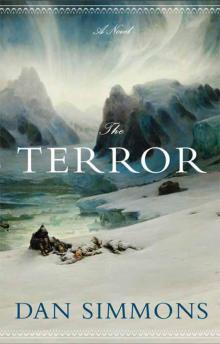 The Terror
The Terror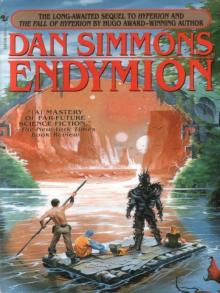 Endymion
Endymion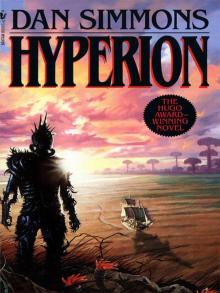 Hyperion
Hyperion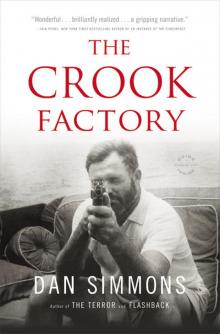 The Crook Factory
The Crook Factory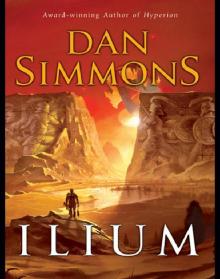 Ilium
Ilium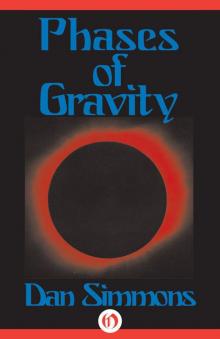 Phases of Gravity
Phases of Gravity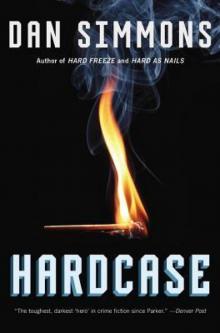 Hardcase
Hardcase Fires of Eden
Fires of Eden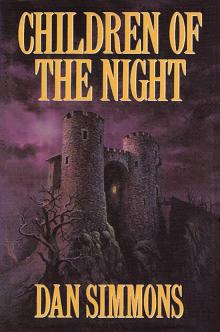 Children of the Night
Children of the Night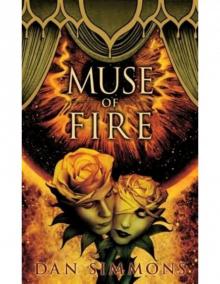 Muse of Fire
Muse of Fire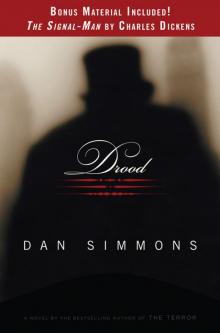 Drood
Drood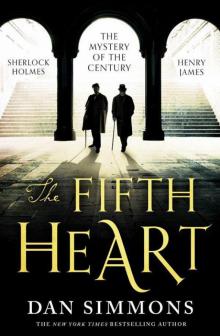 The Fifth Heart
The Fifth Heart Carrion Comfort
Carrion Comfort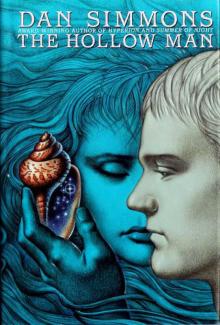 The Hollow Man
The Hollow Man Summer of Night
Summer of Night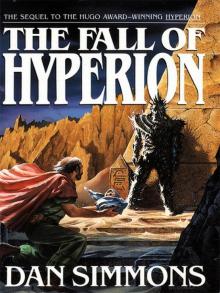 The Fall of Hyperion
The Fall of Hyperion Black Hills
Black Hills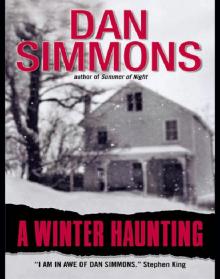 A Winter Haunting
A Winter Haunting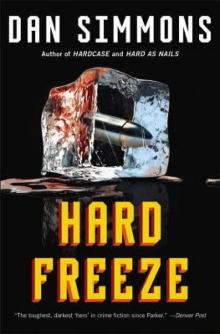 Hard Freeze
Hard Freeze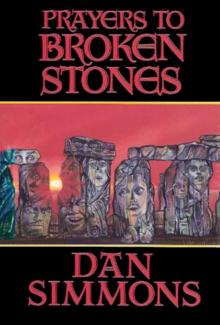 Prayers to Broken Stones
Prayers to Broken Stones Hard as Nails
Hard as Nails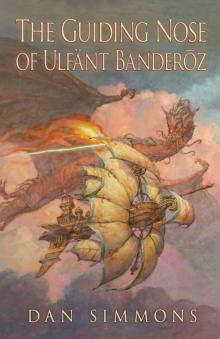 The Guiding Nose of Ulfant Banderoz
The Guiding Nose of Ulfant Banderoz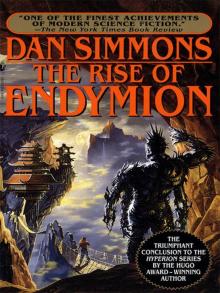 The Rise of Endymion
The Rise of Endymion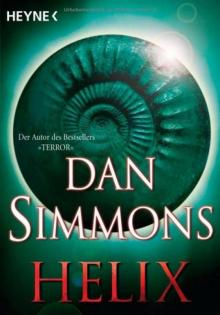 Orphans of the Helix
Orphans of the Helix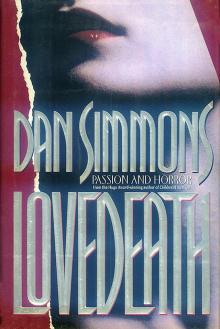 Lovedeath
Lovedeath Olympos
Olympos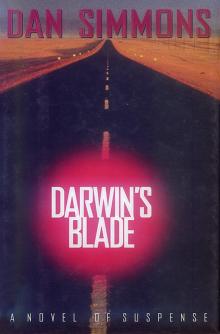 Darwin's Blade
Darwin's Blade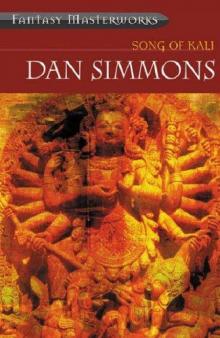 Song of Kali
Song of Kali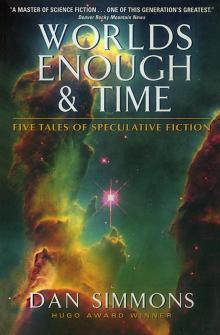 Worlds Enough & Time: Five Tales of Speculative Fiction
Worlds Enough & Time: Five Tales of Speculative Fiction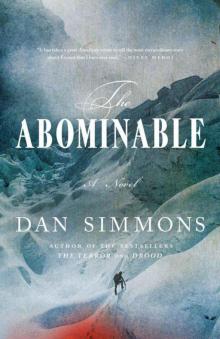 The Abominable
The Abominable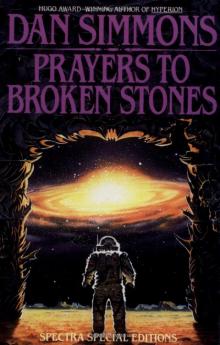 The Death of the Centaur
The Death of the Centaur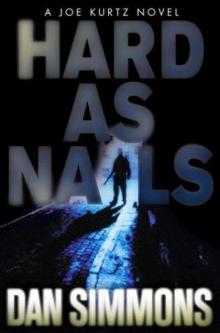 Hard as Nails jk-3
Hard as Nails jk-3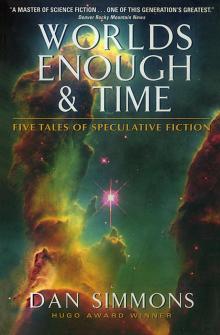 Worlds Enough & Time
Worlds Enough & Time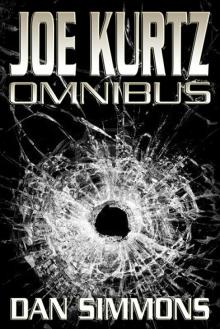 Joe Kurtz Omnibus
Joe Kurtz Omnibus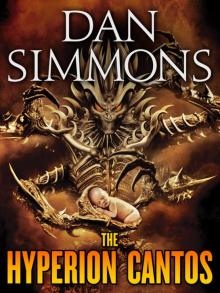 The Hyperion Cantos 4-Book Bundle
The Hyperion Cantos 4-Book Bundle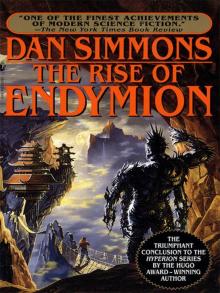 Rise of Endymion
Rise of Endymion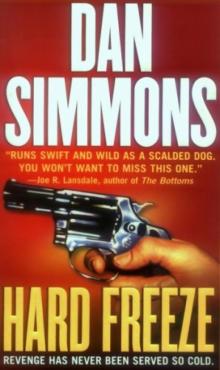 Hard Freeze jk-2
Hard Freeze jk-2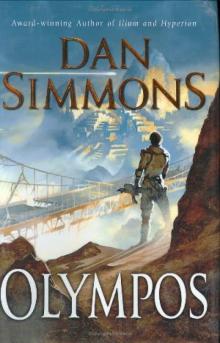 Olympos t-2
Olympos t-2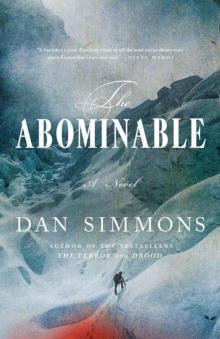 The Abominable: A Novel
The Abominable: A Novel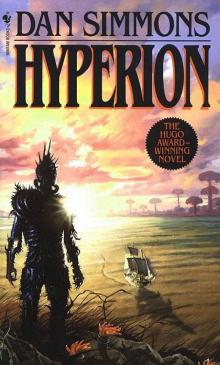 Hyperion h-1
Hyperion h-1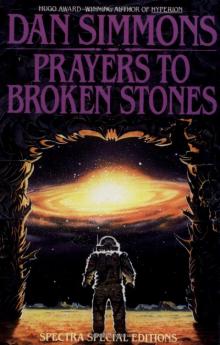 Remembering Siri
Remembering Siri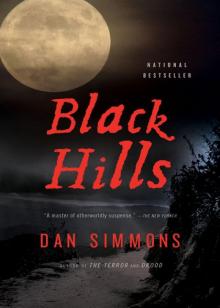 Black Hills: A Novel
Black Hills: A Novel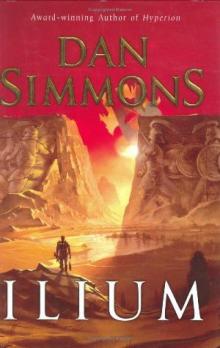 Ilium t-1
Ilium t-1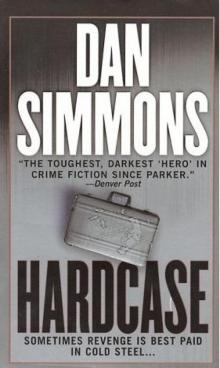 Hardcase jk-1
Hardcase jk-1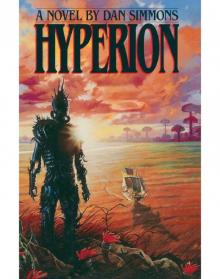 Hyperion 01 - Hyperion
Hyperion 01 - Hyperion